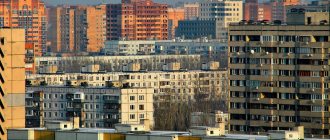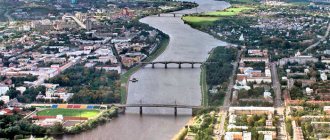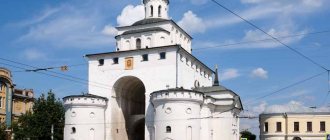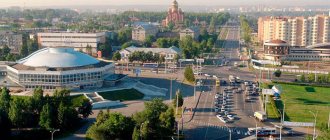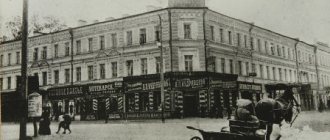How many people live in the city of Nizhny Tagil, what is the population as of January 1, 2022, what number of people live officially, is it increasing or decreasing in municipal areas, growing or vice versa, decreasing, decreasing and where?
Statistics have always interested people and no matter what it concerns, and we are interested in it for a variety of reasons, out of curiosity and for other, very different reasons, we want to know about something, for example, about a given topic, which we will deal with below.
Population census of Nizhny Tagil, how many people live on January 1?
What is the official population of Nizhny Tagil for 2022, how many people live according to the census, how many people are in urban areas as of January 1, trends in profit and loss, whether their number is increasing or decreasing, such questions are of interest to many and we will try to get answers to them.
The city of Nizhny Tagil with all its administrative districts is part of the Russian Federation, located in the Sverdlovsk region of Russia, the administrative center of the urban district.
We will look into the population of the city of Nizhny Tagil, how many people live as of January 1, 2022, and how many people officially live in urban areas.
NIZHNY TAGIL
NIZHNY TAGIL, a city in Russia, in the west. parts of the Sverdlovsk region. Us. 358.9 thousand people (2012; the second most populous city in the region after Yekaterinburg). Located on the east. slope Wed. Ural, on the river Tagil and along the banks of the Nizhny Tagil pond. Junction of railways and roads.
Nizhny Tagil. Panorama of the city. Photo by I. A. Malakhovsky
The emergence of NT is associated with the discovery in 1696 and development of iron ore deposits near Mount Magnit (now Vysokaya). Prom. Tsar Peter I entrusted the development of this territory to N.D. Demidov (Antyufeev). The founding date of N.T. is traditionally considered to be 1722 - the time of the emergence of the first settlement near Mount Magnit and the launch of the Vyisky blast furnace, hammer and copper smelting plant. Actually, the Nizhny Tagil blast furnace, processing and copper smelting plant, which had the largest blast furnace in Europe at that time, was launched in 1725 by A. N. Demidov. Until 1917 it belonged to A.N. Demidov and his descendants, in 1917–1918 - JSC Nizhny Tagil and Lunievsky Mining Plants of the heirs of P.P. Demidov, Prince of San Donato.
Almost from the moment the village was founded. The Nizhny Tagil Plant became a major center of the Ural-Siberian Old Believers. Maintaining close ties with Ch. centers of Old Belief in Europe. Russia (the Vygo-Leksinsky hostel and the Kerzhensky Old Believers monasteries), the Tagil Old Believers played. role in organizing a unified system of secret monasteries and hermitages in the Urals. Nizhny Tagil Old Believers made a significant contribution to the formation of the so-called. factory direction of the original Old Believers. historical writing. Since 1765, the first school in private factories in the Urals operated here, in which the children of clerks and factory employees studied. The Old Believers occupied it. some of the positions of clerks.
K ser. 18th century village The Nizhny Tagil Plant turned into a settlement with developed industries and small-scale wholesale trade. In the beginning. 1760s The artisan working people of the village joined the mass unrest of the assigned peasants, protesting against the owners’ attempts to limit their entrepreneurial activities. In the end 1770s – 1790s Together with the Nevyansk people, part of the Nizhny Tagil artisans from among the possessions waged a long struggle against their transfer to the position of serfs. At the same time, during the Pugachev uprising of 1773–75, the residents of the village remained loyal to the authorities and actively participated in the battles with the Pugachevites in the defense of the Yugovsky factories and Yekaterinburg (the battle for the Utkinsky factory in February 1774).
Nizhny Tagil. Monument to N. N. Demidov. 1836 (remelted in 1924). Sculptor F. J. Bosio. Architects A. Z. Komarov, K. A. Lutsenko, O. Montferrand, E. I. Dimert. Colored postcard. 1910s
From ser. 18th century the village was a major cultural center of the Urals and the West. Siberia. One of the leading centers for the production of varnishes. painted metal trays (the most famous masters of lacquer painting are the Khudoyarovs), copper utensils, art. cast iron casting (among the Nizhny Tagil products are 4 cast iron bridges in St. Petersburg: Potseluev; Semenovsky; Krasny; on the Obvodny Canal, near the Moskva Zastava); Icon painting developed in the “Nevyansk” manner. At 18 – beginning. 20th centuries the following people worked at the Nizhny Tagil plant: E. G. Kuznetsov - inventor of the continuous rolling mill, etc.; E. A. and M. E. Cherepanov; hydraulic engineer S. E. Kozopasov; metallurgical scientists K. P. Polenov and V. E. Grum-Grzhimailo and others.
In terms of its appearance and social structure, the village. Nizhny Tagil Factory 18 – beginning 19th centuries was close to the mountains. settlement. Since 1807, the center of the private Nizhny Tagil mountain region. (included 9 factories owned by the heirs of N.A. Demidov). In 1814, the district began mining malachite at the Mednorudyanskoye deposit (it was used for finishing the internal colonnade of St. Isaac's Cathedral, the Malachite Hall of the Winter Palace, making decorative bowls, etc.); in the 1820s – mining of gold and platinum. In 1878, constant traffic was opened along the railway that passed through the village. line Goroblagodatskaya - Yekaterinburg, in 1910 - along the line San Donato - Nizhnyaya Salda. In 1916, during the 1st World War, Vysokogorsk Mechanical Engineering was opened in the village. a factory that manufactured shells.
On Dec. 1917 general meeting of the Council of Workers' and Soldiers' Deputies in the village. Nizhny Tagil Plant was proclaimed owl. power. During the Civil War of 1917–22, residents of the village took an active part in the battles in the South. in the Urals against the Cossack detachments of Ataman A.I. Dutov during the Dutov speech of 1917–18, in the suppression of the Socialist Revolutionary uprising in Nevyansk (June 1918); July – November 1918 held the defense in the Tagil direction East. front of the Red Army, opposing the Czechoslovak corps to the 1918 offensive, participated in the July counter-offensive of the Red Army troops on Yekaterinburg. From the beginning of Nov. From 1918 until mid-July 1919, the village was under the control of the Ufa Directory, and then the “Omsk Government”. The Bolshevik underground operated in the village. 19.7.1919 occupied by units of the Red Army during the Yekaterinburg offensive. operations, part of the Eastern Front offensive of 1919–20.
Since 1919, the city of N. T. has been a district town in the Yekaterinburg province (1922–23). Center of Tagil region (1924–30) and Tagil (from 1930 Nizhny Tagil) district (1924–31) of the Ural region. During industrialization in the 1930s. A number of large industrial facilities were built in N.T. enterprises: Ural Carriage Works. plant (launched in 1936; now Uralvagonzavod), Novotagil metallurgical plant. plant (1937), peat chemical plant (1938, since 1976 “Uralchimplast”), in 1940 the first coke oven battery of the coke plant was launched.
In Vel. Otech. During the war, many industrial facilities were evacuated to N.T. enterprises from Europe. parts of the USSR, including Krivoy Rog metallurgical and coke chemical factories, Kharkov locomotive builder. plant, the Lenruda trust, the Bezhitsky steel plant, the Kiev Medikoinstrument plant and the Leningrad Krasnogvardeets plant (a medical-instrument plant was created on their basis), etc. It builds carriages in the Urals. The plant launched production of T-34 tanks (over 35 thousand units were produced before 1945), armored hulls for Il-2 aircraft, aerial bombs, etc. At Novotagil metallurgical plant. The plant has established production of armor steel for tanks. On the basis of the peat chemical plant and a number of evacuated enterprises, the production of plastic products for the needs of the front was organized - parts for shells, bombs, tanks; field telephone housings, etc.
In 1957, as a result of the merger of the Novotagil Metallurgical District. plant, metallurgical plant named after V.V. Kuibysheva, coke chemist. and a refractory plant and three mines, the Nizhny Tagil Metallurgical District was created. plant named after V.I. Lenin. In 2008, 22 surrounding towns and villages were included within the boundaries of N.T.
Nizhny Tagil. Main Directorate of the Nizhny Tagil Mining District. 1830–33. Architect A.P. Chebotarev. Photo by E. V. Netunaev
Means. a share in the appearance of N.T. is made up of industrial monuments. architecture of the 18th–19th centuries: factory dam (1722, master L. Zlobin, locks reconstructed in the 1930s); Lower (mid-18th century) and Upper (between 1809 and 1824) food warehouses; ensemble of the Nizhny Tagil plant (1840s, architect K. A. Lutsenko). The following buildings were built in the classicist style: an observation tower on Fox Mountain (1818; used as an astronomical and meteorological observatory, a fire tower), a 2-story factory hospital with a 6-column Ionic portico. warrants (1826–29, architect A.P. Chebotarev); ensemble of the building Ch. Department of Nizhny Tagil Mining District. with an 8-column doric portico. warrant (1830–33, architect Chebotarev) with an adjacent laboratory and technical building. library (1830s; now the Museum of History and Local Lore); at home 1st floor 19th century
Among the many architect monuments of the 2nd half. 19 – beginning 20th centuries: crowned with 5 tents c. St. Alexander Nevsky in the Russian-Byzantine style (1862–77, presumably architect T. F. Girst); ex. Edinoverie brick Holy Trinity Church. (1877–85), Edinoverie c. St. Nicholas the Wonderworker (consecrated in 1900); building of the mining plant (now the Mining and Metallurgical College named after E. A. and M. E. Cherepanov), zemstvo and city. schools (all from the last third of the 19th century); stone and semi-stone 1–2-storey vaults. houses (late 19th century; with facades in the spirit of the Russian style or neo-Renaissance - Lebedevs, Motylevs, etc.; in the house of V.K. Khlopotov, the Illusion cinema was opened in 1911; etc.), estate of the manager Lyubimov, 2- Kokushkin's storey trading house with rich decoration of the street facade (early 20th century); Orlov's house in Art Nouveau style (1910s). The trees have been preserved. houses: 2-storey house of artists I.F. and V.I. Khudoyarovs (1st half - mid-19th century). South of the city center is the Sorrowful Women's Monastery. (in honor of the icon of the Mother of God “Joy of All Who Sorrow”; women’s community - 1883, monastery since 1904, closed in 1923, revived in 1998) with the Ascension (Exaltation of the Cross) Cathedral (1914) and c. in honor of the icon of the Mother of God “Joy of All Who Sorrow” (1883).
Nizhny Tagil. Drama Theater. 1955. Architect A. V. Tarasenko.
In the 1930s, in connection with the reconstruction of the center, the following buildings were built: the State Bank building (1931–36), the Sev. Ural", railway club; the “Red Stone” district arose (project of the workshop of architect M. Ya. Ginzburg; not fully implemented; 2 residential buildings in the style of late constructivism were preserved). From the end 1940s the city center developed according to the 1948 plan (architects E. Ya. Rosenbaum, B. P. Shtivel); in the style of owls built in neoclassicism: residential buildings along the avenue. Lenin (1950, architects J. Svirsky, G. Thieme), dramatic. theater (1955, architect A.V. Tarasenko), Palace of Culture of Metallurgists in Tagilstroevsky District (1952, architect V.V. Emelyanov). According to the 1947 plan with a rectangular grid of streets (architect T.N. Druzhinina and others), the residential district of Uralvagonzavod was built up (DK, 1958, architect O. Zalesskaya). In connection with the construction of metallurgical plant named after V.I. Lenin (1957) in the end. 1950s – 1960s Leningradsky Avenue was being built up. (architects V.I. Soltys, V.V. Solomein), Vyisky district, microdistricts “A” and “B” in the city center (architects A.N. Obukhov, L.A. Balaeva). In 1998, the Kazan men's monastery was opened. (formerly Kazan Edinoverie Church, 1871–72, since 1958 cathedral). In the 2000s. built: c. St. Dmitry Donskoy (2000–03), 5-chapter c. St. Sergius of Radonezh (2000–04).
Monuments to: V. I. Lenin (1925, sculptor V. V. Kozlov, architect A. I. Frolov), E. A. and M. E. Cherepanov (1956, sculptor A. S. Kondratyev, architect V. A. Sotnikov), “Heroes of the Civil War” (1957), warrior-miners who died during the Great. Otech. Wars (1965); stela in honor of metallurgical smelting. plant with the 100 millionth ton of steel (1967).
Universities: State. socio-pedagogical Academy (founded in 1939 as the Teachers' Institute, current name since 2003), Technological. Institute (branch of the Ural Federal University named after the first President of Russia B.N. Yeltsin), branches: Ural State. University of Communications, Ural State. economical University, Ural Institute of Economics, Management and Law (non-state university). Nizhny Tagil Museum-Reserve "Gornozavodskoy Ural" (formed in 1987) includes local history. library (known since 1854 as a factory) and 10 museums, including the History and Local Lore Museum (1840, one of the first provincial museums in Russia, closed in 1908, reopened in 1924 as a local history museum); Museum of Nature and Environmental Protection; Museum-factory of the history of the development of ferrous metallurgy technology; Museum of Life and Crafts of the Mining Population; Museum of the History of Tray Crafts; Museum of the History of Technology “House of the Cherepanovs” (early 19th century, architect A.P. Chebotarev); Memorial lit. Museum of A.P. Bondin (wooden one-story house of the early 20th century, where he lived in 1935–39). The Municipal Museum will depict. Arts (founded in 1943, opened in 1944). Museum of armored vehicles at Uralvagonzavod. Puppet Theater (1944), Dramatic. Theater named after D. N. Mamin-Sibiryak (1946), Municipal Youth Theater (1993). Among the sports teams, the most famous is the women's volleyball club "Uralochka" - NTMK - multiple champion of the USSR (11 times) and Russia (14 times); 8-time European Cup winner. champions (1981–1995); hosts opponents at the Metallurg-Forum Sports Palace (3,200 seats). The Sputnik hockey club plays in the Major Hockey League; hosts opponents at the Ice Sports Palace. V.K. Sotnikova (4200 places).
N.T. is one of the largest industrial companies. centers of the Urals. Leading enterprises: "Uralvagonzavod" (the parent enterprise of the scientific and production corporation of the same name; freight railway cars - tanks, platforms, gondola cars, road construction equipment, tractors; products for the needs of the defense industry, incl. T-72, T-90S tanks, tank support combat vehicles, armored mine clearance vehicles), metallurgical plant (one of the leading enterprises for processing vanadium-containing titanomagnetite ores; produces vanadium cast iron, vanadium slag, as well as rolled metal for railway transport, including heat-strengthened rails, wheels), Vysokogorsky mining and processing plant. plant (extraction of iron ore and production of iron ore sinter; the main consumer of products is the metallurgical plant) (both enterprises are part of the Evraz Group company), Uralkhimplast (as part of the holding of the same name; a large Russian producer of synthetic resins and plastics), chemical plant "Planta" (explosive explosives for the needs of the military-industrial complex, as well as furniture with facade parts lined with polyvinyl chloride films, etc.). There are also factories: medical-instrumental (including diagnostic equipment), boiler-radiator, metal structures, Vysokogorsk experimental-instrumental (molds, stamps, cutting tools, etc.), mechanical (various industrial equipment), thermal insulation . products. Ural Design Bureau of Transport Engineering (development of special products for the needs of the defense industry, as well as excavators, loaders, attachments), Institute of Metal Testing (testing of artillery weapons, ammunition; the enterprise includes its own flight test base ).
In the vicinity of N.T., in the village. Visim, - Literary and Memorial Museum of D. N. Mamin-Sibiryak, in the village. Murzinka – Mineralogical. museum named after A.E. Fersman (both are branches of the Gornozavodskoy Ural Museum-Reserve).
Population in municipal, urban areas
Name based on location on the Tagil River (right tributary of the Tura); the definition “lower” indicated the presence of another plant upstream of the Tagil River.
The city is located on the eastern slope of the Ural Mountains, 20-25 km from the conventional border of Europe and Asia at an altitude of 200 m above sea level. The western border of the city runs along the Ural mountain range (Merry Mountains).
To the west of the city lies the main watershed of the Ural Range with individual hills and mountain ranges stretching from north to south.
Nizhny Tagil is located in a zone of temperate continental climate with characteristic sharp variability of weather conditions and well-defined seasons.
Now we will tell those interested in the climate in the city of Nizhny Tagil, what the average temperature was according to research over the past few years, the maximum and minimum values, as well as the average and norms of precipitation:
Climate of Nizhny Tagil (weather, precipitation)
TO
| Index | Jan. | Feb. | March | Apr. | May | June | July | Aug. | Sep. | Oct. | Nov. | Dec. | Year |
| Avg. pace. | −14,5 | −12,8 | −5,4 | 2,9 | 9,8 | 15,7 | 17,8 | 14,3 | 8,3 | 1,8 | −7,9 | −11,2 | 1,7 |
Whether the population of the city of Nizhny Tagil is decreasing or increasing, what is its official number according to the census as of January 1, 2022, in its municipalities, urban areas, we will learn about this later, when accurate information appears, for now we will present the currently available figures.
Date of foundation of Nizhny Tagil: 1722
Time zone: MSK +2, UTS +5
City `s history
Nizhny Tagil was founded on October 8 (or 19 according to the old style) 1722 by the Demidov dynasty. On this day, the Vyisky plant, which belonged to the founders of the city before the revolution, produced its first batch of cast iron. The products of the copper smelting and ironworks of Nizhny Tagil, produced under the brand name “Old Sable”, became world famous during this period. The New York Statue of Liberty was built using Tagil metal. Sculptor F. Bartholdi, who created the world-famous statue, purchased sheet copper manufactured by the Verkhne-Vyysky plant for its outer shell. By that time, these products had already received awards from the World Technical Exhibitions, which were held in Paris and Birmingham. In pre-revolutionary Nizhny Tagil, artistic painting of trays became widespread. In addition, the first Russian steam locomotives were built by city residents - father and son Cherepanovs, whose memory is immortalized in a sculpture installed on Teatralnaya Square. Another Tagil resident, mechanic Efim Artamonov, also made his contribution to the world history of inventions, whose genius belongs to the world's first scooter equipped with steering and pedals (i.e., a bicycle).
During the Civil War, fierce battles took place in Nizhny Tagil, in which more than 10 thousand Red Army soldiers and about 6 thousand defenders of the Russian Empire took part. The White Guards were supported by the Czechoslovaks. Historians have established that the battles near Nizhny Tagil claimed the lives of 400 Czechoslovak soldiers. In their memory, a monument was opened in the city in 2009, on which 67 reliably established names of fallen legionnaires from Czechoslovakia were carved.
The city also played an important role during another war that our country had to endure. The overwhelming number of T-34 tanks that took part in the Great Patriotic War were produced at Uralvagonzavod, which housed 11 evacuated enterprises from the western part of the Soviet Union.
City status was assigned to Nizhny Tagil in August 1919, when the Yekaterinburg Military Revolutionary Committee issued a decree according to which the Nizhny Tagil plant was transformed into a city. In 1926, Nizhny Tagil had 5 clubs, 8 libraries, and its own radio center. During this period, the city's population numbered 42 thousand people, living mainly in one-story wooden houses. There were no sewerage or running water in the city at that time.
In 1932, construction of the Ural Carriage Plant began in Nizhny Tagil, which produced its first freight car in 1936, and its first tram in 1937. The first city university was the Teachers' Institute, founded in 1939. Before this, there were 19 schools and 2 technical schools operating in the education sector in the city. There was also a workers' faculty that trained qualified personnel for Tagil enterprises.
Population gain or loss according to the census
The total and official population of the city of Nizhny Tagil, how many people live in it as of January 1, 2022, the number of people in each individual urban district and municipality, further in the second table.
| Year | Growth/decrease population city of Nizhny Tagil |
| 2017 | ↘355,693 people |
| 2018 | ↘353,950 people |
| 2019 | ↘352 135 people |
| 2020 | ↘349,008 people |
| 2021 | ↘344,656 people |
| 2022 |
The science
About 1,000 doctors and 5,000 candidates of science work in the scientific field of the region. The Ural branch of the Russian Academy of Sciences unites 22 academic scientific institutes; there are more than 100 research, design, technological, design and other scientific institutions in the region.
Technoparks: In Yekaterinburg: technopark "Priborostroenie" based on NPO Avtomatiki, technopark for the development and production of medical equipment and industrial automation "Averon", Ural mining scientific and technological park "IntelNedra"; in the cities of the region: Nizhny Tagil - technopark "VMZ"; Novouralsk - scientific and medical park "Medtekhpark", Sredneuralsk - technology park "Energia". Currently, the Universitetsky technopark is being created on the basis of the Ural Federal University (Ekaterinburg).
What is the population of the city of Nizhny Tagil?
| Urban district of Nizhny Tagil | 347 167 | 344 656 | 2 511 |
| Nizhny Tagil | 344 656 | 344 656 | 0 |
| including inner city areas | |||
| Dzerzhinsky district | 0 | 0 | 0 |
| Leninsky district | 0 | 0 | 0 |
| Tagilstroevsky district | 0 | 0 | 0 |
With the population of the city of Nizhny Tagil as of January 1, 2022, how many people live in this territory, people in municipalities and this locality, this territorial unit of the Russian Federation, that’s what we figured out here, we contributed to satisfying the requests of those interested in this statistical information.
Unfavorable days in 2022, difficult for health and well-being
Lunar calendar for hair cutting 2022, favorable days to cut hair
Economy
The economically active population of the region at the end of March 2006, according to estimates by state statistics bodies, amounted to 2343.3 thousand people. Of these, 2180.6 thousand people are employed in the economy and 162.7 thousand people did not have an occupation, but were actively looking for it and, in accordance with the ILO methodology, were classified as unemployed. 41.7 thousand unemployed are officially registered with the state employment service. The level of general unemployment was 6.9%, registered - 1.8% of the economically active population.
Minerals
Minerals: gold, platinum, asbestos, bauxite, mineral raw materials - iron, nickel, chromium, manganese and copper. Accordingly, the basis of the regional economy is the mining and metallurgical industries.
Industry
The structure of the industrial complex is dominated by ferrous and non-ferrous metallurgy (31% and 19% of industrial production, respectively), uranium enrichment and iron ore enrichment, and mechanical engineering.
The engineering industries are dominated by the “heavy military-industrial complex” (production of armored vehicles and ammunition), as well as heavy individual engineering (equipment for the mining, energy and chemical industries). Among the large enterprises in this area, it is worth noting Uralvagonzavod.
Transport
The Sverdlovsk region is an important transport hub - railway, road and air routes of all-Russian importance pass through it, including the Trans-Siberian Railway. The density of the railway and road networks exceeds the national average. The major international airport in Yekaterinburg is Koltsovo.
Agriculture
According to the All-Russian Agricultural Census conducted in 2006, on the territory of the Sverdlovsk region [15] [16] there are 829 agricultural organizations and 2,178 peasant farms and individual entrepreneurs. Of these, in 2006, 513 organizations (including 312 large and medium-sized) and 934 peasant farms and individual entrepreneurs carried out agricultural activities. Of the 311.2 thousand personal subsidiary plots, 87% of farms were engaged in the production of agricultural products.
For the 2006 harvest, 933.3 thousand hectares were sown. Of them:
The number of cattle in 2006 was 343.7 thousand heads:
The number of poultry is 10.1 million in organizations and 0.6 million in peasant farms and individual entrepreneurs.
Ecology
Nizhny Tagil, being a large industrial center, cannot boast of environmental well-being. Many people are familiar with jokes about the “moron from Tagil”, about soot-colored snow, about mutants, etc., from the times of the USSR.
Such black humor did not make the life of Tagil residents more fun, who were seriously ill and died in the prime of life.
But after 1991, many industrial enterprises closed or went into private hands with a reduction in the scale of activity. This certainly had a beneficial effect on the environment. And today's giants are trying to move away from “dirty” production by purchasing high-quality cleaning equipment.
Today, the main environmental pollutants in Tagil include cars, burning peat bogs, landfills and dust.




